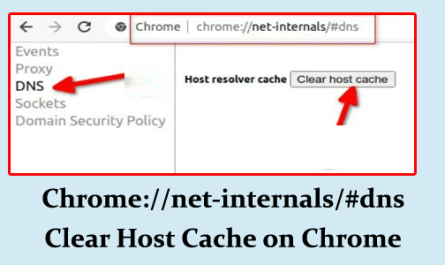Contents
The article “Navigating the Digital Highways: An In-Depth Look at Parivahan Sewa” aims to provide a thorough examination of the Indian Ministry of Road Transport & Highways’ innovative online portal, Parivahan Sewa. This service represents a significant leap forward in digitizing and streamlining transport-related services in India, catering to a wide array of needs including vehicle registration, license management, and tax payments. Our article plans to delve into the multifaceted aspects of Parivahan Sewa, offering readers an informative and insightful exploration of this digital initiative.
In this article, we will commence with an exploration of the various services offered by Parivahan Sewa, detailing the processes involved in vehicle registration, license applications, permit services, and the payment of various taxes and fees. A critical analysis of the user experience will follow, assessing the platform’s accessibility, both through web and mobile interfaces, and its regional and linguistic inclusivity.
Furthermore, the article intends to evaluate the tangible impacts of Parivahan Sewa, particularly in terms of service delivery efficiency, transparency, and corruption reduction. To provide a balanced view, we will also discuss the challenges and limitations faced by users, focusing on technical issues, accessibility challenges, and areas needing improvement.
A comparative analysis with similar international services will shed light on where Parivahan Sewa stands in the global context, complemented by an assessment of the changes observed in the Indian transport service landscape pre and post the implementation of Parivahan Sewa. Looking forward, we will speculate on the future enhancements and long-term objectives of this digital initiative.
Our aim is to present a comprehensive, well-researched, and engaging article that not only informs but also encourages discourse on the digital transformation of public services in India. By the end of this article, readers should have a clear understanding of what Parivahan Sewa is, how it operates, and its significance in the broader context of digital governance and public service delivery.
Services Offered by Parivahan Sewa

As a professor delving into the intricacies of Parivahan Sewa, it’s crucial to understand the breadth of services this platform offers. Parivahan Sewa, an initiative by the Ministry of Road Transport & Highways in India, has revolutionized how transport-related services are delivered. This segment of the article focuses on the key services offered by Parivahan Sewa, elaborating on each aspect:
1. Vehicle Registration Services
- New Vehicle Registration: Parivahan Sewa facilitates the online registration of new vehicles. This service streamlines the process of obtaining registration certificates (RC).
- Transfer of Ownership: In case of a vehicle resale, the platform allows for the transfer of vehicle ownership.
- Renewal of Registration: The portal also caters to the renewal of vehicle registration upon its expiry.
- Issuance of NOC: For inter-state vehicle transfers, Parivahan Sewa provides an online facility to issue No Objection Certificates (NOC).
2. Driving License Services
- Learner’s License Application: Applicants can apply for a learner’s license, book slots for the learner’s test, and pay the necessary fees online.
- Driving License Issuance: Following the learner’s phase, users can apply for a permanent driving license, schedule a driving test, and receive their license.
- Renewal and Duplicate License: The platform provides services for the renewal of expired licenses and the issuance of duplicates in case of loss or damage.
- License Endorsement: Services related to adding new vehicle classes to existing licenses are also available.
3. Permit Services
- Types of Permits: Parivahan Sewa deals with various permits such as Goods Carriage Permit, Passenger Vehicle Permit, National Permit for commercial vehicles, etc.
- Application and Renewal: Users can apply for new permits and renew existing ones, streamlining what was once a cumbersome process.
4. Payment of Taxes and Fees
- Road Tax Payment: The portal allows users to pay road taxes for their vehicles without the need to visit a transport office.
- Other Fees: It also consolidates the payment of other transport-related fees, like license fees, permit fees, etc.
5. Miscellaneous Services
- Fitness Certificate for Vehicles: Application and issuance of fitness certificates for commercial vehicles can be managed online.
- Address Change in Documents: Users can update their address in vehicle registration and driving license documents through the portal.
6. Compliance and Enforcement Services
- E-Challan Services: The platform integrates with traffic enforcement systems for the issuance and payment of e-challans.
- Vehicle-Related Inquiry: Users can check the status of any vehicle regarding its registration, NOC, and other legal compliances.
7. User Support and Grievance Redressal
- Customer Support: Parivahan Sewa provides customer support for queries and assistance.
- Grievance Redressal Mechanism: A system for addressing user grievances and complaints related to transport services is in place.
User Experience and Accessibility
As a professor analyzing the Parivahan Sewa platform, it is essential to thoroughly understand and evaluate its user experience and accessibility. This digital initiative by the Ministry of Road Transport & Highways of India aims to provide seamless access to a range of transport-related services. However, the effectiveness of such a platform largely depends on its usability and how accessible it is to its diverse user base. Here is a detailed exploration of these aspects:
- Design and Layout: The Parivahan Sewa website features a user-friendly interface with a clear and intuitive design. Key services are prominently displayed, guiding users efficiently to the required sections.
- Ease of Use: The platform is structured to facilitate easy navigation, even for users with limited digital literacy. However, there can be instances where the sheer number of services offered might overwhelm new users.
2. Mobile Accessibility
- Mobile Website: Parivahan Sewa’s mobile website version retains the functionality of the desktop site, catering to users accessing the service on smartphones.
- Mobile Application: The availability of a mobile app (if any) and its functionality would significantly impact the accessibility for users preferring mobile devices.
3. Language and Regional Accessibility
- Multilingual Support: An important aspect of Parivahan Sewa is its support for multiple Indian languages, making it accessible to a broader audience across different linguistic backgrounds.
- Regional Adaptation: The platform’s ability to cater to region-specific rules and regulations in transport services is crucial for its nationwide applicability.
4. Information Clarity and Help Resources
- Informational Content: The website provides detailed information on each service, including step-by-step guides, which are crucial for user comprehension.
- Help and Support: Availability of help resources like FAQs, user guides, and customer support contacts enhances the user experience significantly.
5. Technical Performance
- Loading Time and Responsiveness: The website’s performance in terms of loading times and responsiveness plays a vital role in user experience, especially in areas with slower internet connections.
- Uptime and Reliability: Regular maintenance and high uptime are essential for ensuring continuous access to the services.
6. Accessibility for Differently-Abled Users
- Inclusive Design: Features such as screen reader compatibility, alternative text for images, and easy keyboard navigation are important to make the services accessible to users with disabilities.
7. Security and Privacy Features
- Data Protection: Ensuring user data privacy and security is paramount, especially when dealing with sensitive personal information.
- Secure Transactions: The platform must provide secure and reliable online payment mechanisms for service fees and taxes.
Also Read:
Impact and Benefits
As a professor analyzing Parivahan Sewa, it’s imperative to assess the impact and benefits this platform has brought to the landscape of transport services in India. Parivahan Sewa, developed by the Ministry of Road Transport & Highways, is more than just a digital platform; it’s a significant step towards modernizing and streamlining transport-related services in the country. Let’s delve into the various aspects of its impact and benefits:
1. Efficiency in Service Delivery
- Streamlined Processes: By digitizing services like vehicle registration, license applications, and tax payments, Parivahan Sewa has significantly reduced processing times.
- Reduced Physical Queues: The online platform minimizes the need for physical visits to transport offices, thereby decreasing long queues and wait times.
2. Enhanced Transparency and Reduced Corruption
- Transparent Procedures: Online processing of services ensures more transparent operations, with each step being recorded and trackable.
- Minimized Human Interaction: By reducing the need for direct interaction with officials, the platform lowers the opportunities for corrupt practices.
3. Increased Accessibility and Convenience
- Remote Access: Citizens can access services from anywhere, reducing the need to travel to government offices, a boon especially for people in remote areas.
- 24/7 Availability: Unlike physical offices, the online platform is available around the clock, offering greater flexibility.
4. User Empowerment
- Self-Service Model: Parivahan Sewa empowers users by allowing them to manage their transport-related services independently without relying on intermediaries.
- Informed Decision Making: With all relevant information readily available, users can make better-informed decisions regarding services.
5. Environmental Impact
- Paperless Transactions: The move towards digital transactions reduces paper usage, contributing to environmental conservation.
- Reduced Carbon Footprint: Less travel to government offices means lower emissions, positively impacting the environment.
6. Economic Implications
- Cost Reduction: Online services cut down on travel and paperwork-related expenses for both the government and citizens.
- Economic Efficiency: Faster processing and reduced corruption can lead to more efficient economic transactions in the transport sector.
7. Integration with Other Government Services
- Data Sharing: Parivahan Sewa’s integration with other government databases enhances service delivery and data accuracy.
- Unified Platform: The platform acts as a unified point for various transport-related services, making governance more cohesive.
8. Feedback and Continuous Improvement
- User Feedback Mechanism: The platform’s feedback system allows for continuous improvement based on user experiences.
- Dynamic Adaptation: Parivahan Sewa has the potential to evolve based on changing user needs and technological advancements.
Challenges and Limitations
- Technical Glitches and System Downtime: Users often face issues with server downtime or technical glitches, hindering seamless access to services.
- Digital Literacy and Internet Accessibility: In a country like India, where digital literacy is still evolving, and internet connectivity can be inconsistent, especially in rural areas, the effectiveness of a completely online service can be limited.
- User Interface and Experience: Although the platform is generally user-friendly, certain aspects, such as navigation and finding specific information, can be challenging for some users.
- Data Privacy and Security: With the platform handling vast amounts of personal data, ensuring the highest levels of data security and privacy is a constant challenge.
- Adaptation to Regional Variabilities: India’s diverse transport rules and regulations across states pose a challenge in standardizing services on a single platform.
Comparative Analysis
When compared with similar digital transport services in other countries:
- Technology Adoption: Countries like the UK and Singapore have more advanced digital infrastructure, which makes the implementation of such services more robust.
- User Base and Diversity: India’s diverse population presents unique challenges in language and regional preferences, which may not be as pronounced in smaller or more homogenous countries.
- Digital Literacy: Higher levels of digital literacy in developed countries lead to smoother transitions to digital platforms.
Future Prospects
- Enhancing User Experience: Continuous efforts to make the platform more user-friendly and intuitive, especially for those with lower digital literacy, will be essential.
- Upgrading Technology Infrastructure: Investing in stronger, more reliable server capabilities and technology infrastructure to reduce downtime and technical issues.
- Expanding Internet Accessibility: Collaborating with other government initiatives to improve internet accessibility and digital literacy across the country, particularly in rural and remote areas.
- Data Security Enhancements: Implementing stronger data protection measures to safeguard user privacy and enhance trust in the system.
- Customization for Regional Needs: Developing more customized solutions that cater to the specific needs and regulations of different states and regions.
- Integration with Other Services: Further integrating Parivahan Sewa with other government services for a more cohesive and streamlined public service experience.
- Innovative Features: Exploring the incorporation of emerging technologies like AI and blockchain for improved service delivery and user engagement.



